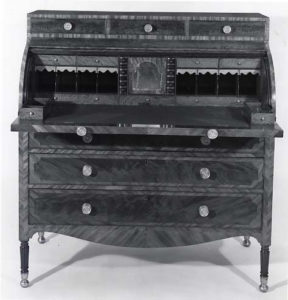Newport’s early inhabitants of former Puritans and Quaker converts did little to celebrate the Christmas season in colonial times. Quiet reflection, a special sermon delivered from a pulpit and the hanging of decorative greens was the extent of festivities. The Victorian period ushered in the robust decorations, music and outward merriment that defines the modern Christmas season.
Santa Claus, an essential participant in the season, has very close ties to Newport. Clement Clarke Moore (1779-1863) was a classics scholar and Episcopal vestryman who lived on Catherine Street in Newport during the summer. He is the author of A Visit From St. Nicholas (The Night Before Christmas), first published in 1823. Written to entertain children, the poem inspired much of what we now consider to be a traditional Christmas, including our vision of Santa Claus. Inspired by Moore’s poem and its descriptions of St. Nick, political cartoonist and satirist Thomas Nast (1840-1902) refined the modern image of St. Nicholas as the large, bearded, jolly elf we know today in the 1881 edition of Harper’s Weekly. Nast himself was best known for his stinging images of Boss Tweed and the Tamany Hall gang of New York and creating the political icons of the donkey and elephant. While visiting Newport, he made a drawing of himself being posted for late payment at a local drinking establishment.
 Clement Clarke Moore’s desk, made by Duncan Phyfe in New York, is on display at the Museum & Shop at Brick Market.
Clement Clarke Moore’s desk, made by Duncan Phyfe in New York, is on display at the Museum & Shop at Brick Market.